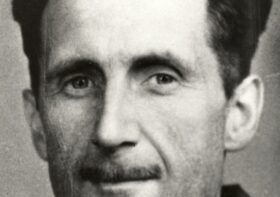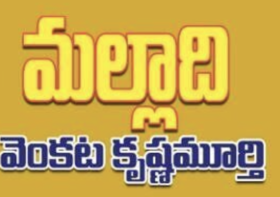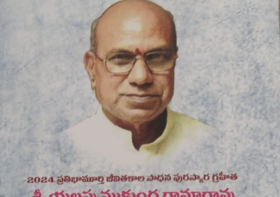Bapu and his letters.

Written by: Ramarao Kanneganti
[This morning Bapu died. I have been a fan off and on, several decades. In 1995 Chicago, I met him; we had a roomful of fans listening to his few words. I recall talking on the stage, about his influences on me, growing up in rural Andhra. This note was written after I got the story Mithunam in post from VCJ. When asked about the review, all I could do was muse over the handwriting!]
ఒక కథలో కొకు అంటాడు — “పుస్తకం కాదు, బాగుండాల్సింది అట్ట అని”. అట్ట బాగుండడానికి కారణం బాపు, తరతరాలుగా.
naa aksharaalu vennelalO aadukonE andmaina aaDapillalu.
Thus spake a poet, who often shunned labels and categorization. I myself have never seen his hand writing; I am not sure if it looked as beautiful as it read.
I don’t know if you all remember, but there was a time when our letters were written, instead of typed. We could read the letter, one character at a time, lingering over each one, with caressing look. The infinte variation in writing a “ta” as in “tala” never ceased to amaze me. You can draw a crude circle, or an oval. You can draw in the middle, at a side. Each one of them is different, telling a different life story.
Letters do look every bit like people. They can look askance, can prattle, sing, dance, and emote at all possible levels. If you prick, they may not bleed, but for all intents and purposes they communicate, as well as the semantics can.
Of course, letters come in all sizes and shapes. Some march proudly on with a bar handle mustache, while others sit demurely staring the ground. Some letters run like children out of the page. Some have character; they sit and observe you. At times, those proud letters believe that “akshraat smbhavatee@h viSwam”.
Alas, I never developed such intimate relation with the Latin alphabet. There are mere geometric forms to me, probably because I never had that many written English letters, while I had a love affair with Telugu handwriting at one time.
That is true; not that my penmanship was good, but I loved good handwriting, even at the expense on content. What can I say? For me, beauty was only skin deep. I was so much taken by the characters, I decided to improve my hand writing, at the late age of fourteen.
I know that these characters come from various families. It is very important to choose the right family to associate with, for the wrong family means going to down the endless complexities, and insipid _golusukaTTU_ discourses.
After a lot of thought, I chose Bapu’s family. At my school, already illustrious seniors like vaa.chi.vee made it fashionable which I tried to copy. I never could go past the simpletons that I was drawing.
The master’s work, of course, was inimitable, with its economy, grace, and expressiveness. I could see the farmers going to work in the mornings, young girls waking up to household chores, kids playing hooky from school, young boys learning to ride bicycles trying to impress the young girls, mothers drawing children closer protectively, fathers throwing up the children high into the air to catch them — I could see all that the letters were trying to tell me.
I could see the concrete poetry behind the letters.
Of course, over time, sadly, I grew out of it. After all these years, I forgot the art of letters. It looks downright silly to fawn over those letters now, yet somehow sad for having lost the sensitivity to them. Now, I communicate with the semantics exclusively, with no assistance from the letters. I no longer write. I type.
Wading through this dreary landscape of lifeless fonts, thankfully, recently, I received a manuscript written by Bapu. The story is immaterial for now. All that mattered was the concrete poetry is still there. After all these years, the letters still communicate to me.
Ramarao Kanneganti
Apr 8, 1997.




Leave a Reply